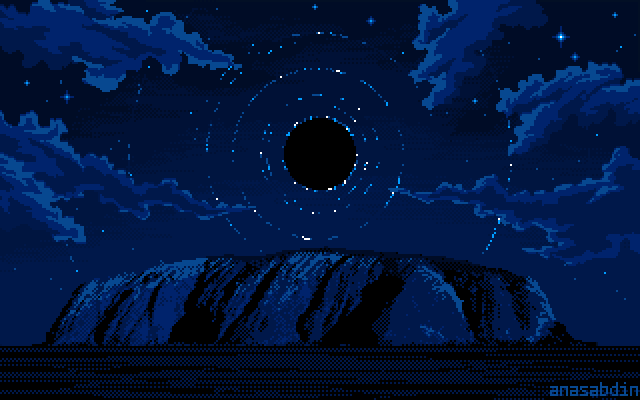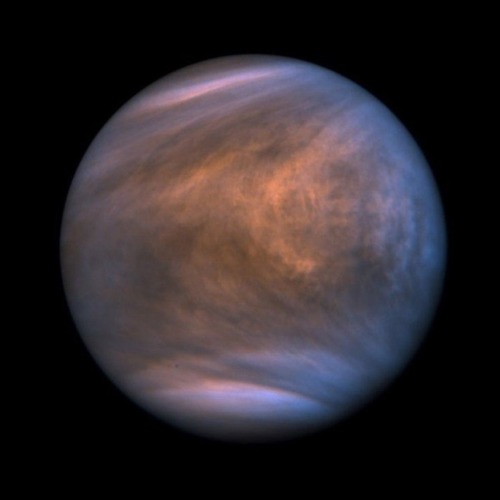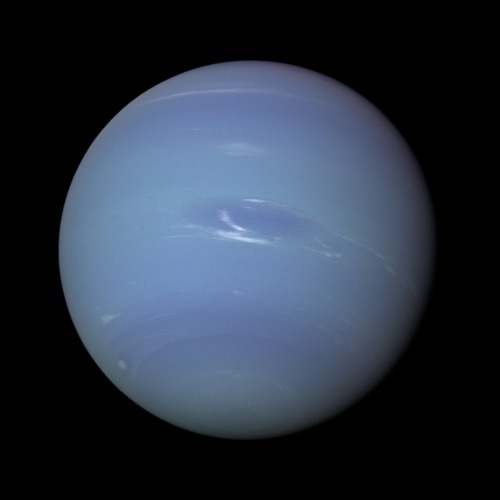Uluru Blackh●le Rise, Me, Pixel Art, 2022

Uluru blackh●le rise, me, pixel art, 2022
More Posts from Of-finite-jurisdiction and Others

NGC 1365, Heart of the Galaxy
A Dusty Fingerprint in Space

A new image from NASA's James Webb Space Telescope reveals a remarkable cosmic sight: at least 17 concentric dust rings emanating from a pair of stars. Just 5,300 light-years from Earth, the star duo are collectively known as Wolf-Rayet 140. Each ring was created when the two stars came close together and their stellar winds (streams of gas they blow into space) collided so forcefully that some of the gas was compressed into dust. The stars' orbits bring them together about once every eight years, and forms a half-shell of dust that looks like a ring from our perspective. Like a cosmic fingerprint, the 17 rings reveal more than a century of stellar interactions—and the "fingerprint" belonging to Wolf-Rayet 140 may be equally unique. Other Wolf-Rayet stars produce dust, but no other pair are known to produce rings quite like Wolf-Rayet 140.
Learn more about Wolf-Rayet 140.
Make sure to follow us on Tumblr for your regular dose of space!

RS Puppis, one of the brightest Cepheid variable stars © Hubble


Space Station Silhouette on the Moon : What’s that unusual spot on the Moon? It’s the International Space Station. Using precise timing, the Earth-orbiting space platform was photographed in front of a partially lit gibbous Moon last month. The featured composite, taken from Payson, Arizona, USA last month, was intricately composed by combining, in part, many 1/2000-second images from a video of the ISS crossing the Moon. A close inspection of this unusually crisp ISS silhouette will reveal the outlines of numerous solar panels and trusses. The bright crater Tycho is visible on the upper left, as well as comparatively rough, light colored terrain known as highlands, and relatively smooth, dark colored areas known as maria. On-line tools can tell you when the International Space Station will be visible from your area. via NASA

oh okay. heart steps right out of my chest and falls down the stairs
SNOOPY IS BACK FROM THE MOON

With NASA announcing their streaming service NASA+ and also announcing it’s going to be free and also ad free, I’d just like to appreciate the lengths they go to make scientific knowledge and exploration as available as they possibly can.



Venus, Callisto (Jupiter’s moon), Neptune

This peculiar portrait showcases NGC 1999, a reflection nebula in the constellation Orion. NGC 1999 is around 1,350 light-years from Earth and lies near the Orion Nebula, the closest region of massive star formation to Earth. NGC 1999 itself is a relic of recent star formation – it is composed of debris left over from the formation of a newborn star.
Credit: ESA/Hubble & NASA, ESO, K. Noll
-
 portmanteaublerone reblogged this · 2 weeks ago
portmanteaublerone reblogged this · 2 weeks ago -
 eclectichellmouth reblogged this · 2 weeks ago
eclectichellmouth reblogged this · 2 weeks ago -
 everythingendsinblue liked this · 2 weeks ago
everythingendsinblue liked this · 2 weeks ago -
 antique-rain reblogged this · 2 weeks ago
antique-rain reblogged this · 2 weeks ago -
 antique-rain liked this · 2 weeks ago
antique-rain liked this · 2 weeks ago -
 vonmorjo reblogged this · 2 weeks ago
vonmorjo reblogged this · 2 weeks ago -
 risky-frisky6 liked this · 2 weeks ago
risky-frisky6 liked this · 2 weeks ago -
 neoncholicnova reblogged this · 2 weeks ago
neoncholicnova reblogged this · 2 weeks ago -
 sweetsickbeauty liked this · 3 weeks ago
sweetsickbeauty liked this · 3 weeks ago -
 mothermasq reblogged this · 3 weeks ago
mothermasq reblogged this · 3 weeks ago -
 jaikage liked this · 3 weeks ago
jaikage liked this · 3 weeks ago -
 beanyspront reblogged this · 3 weeks ago
beanyspront reblogged this · 3 weeks ago -
 bluesolitude reblogged this · 3 weeks ago
bluesolitude reblogged this · 3 weeks ago -
 thenecronomiconeconomist reblogged this · 3 weeks ago
thenecronomiconeconomist reblogged this · 3 weeks ago -
 thenecronomiconeconomist liked this · 3 weeks ago
thenecronomiconeconomist liked this · 3 weeks ago -
 past4-any0ne reblogged this · 3 weeks ago
past4-any0ne reblogged this · 3 weeks ago -
 wretchedtrajectory reblogged this · 3 weeks ago
wretchedtrajectory reblogged this · 3 weeks ago -
 ddynkttnz reblogged this · 3 weeks ago
ddynkttnz reblogged this · 3 weeks ago -
 ddynkttnz liked this · 3 weeks ago
ddynkttnz liked this · 3 weeks ago -
 moon-kin reblogged this · 3 weeks ago
moon-kin reblogged this · 3 weeks ago -
 hyenagirl-pseudophallus reblogged this · 3 weeks ago
hyenagirl-pseudophallus reblogged this · 3 weeks ago -
 hyenagirl-pseudophallus liked this · 3 weeks ago
hyenagirl-pseudophallus liked this · 3 weeks ago -
 love-is-pain-highness liked this · 3 weeks ago
love-is-pain-highness liked this · 3 weeks ago -
 herrefulgentdemon reblogged this · 3 weeks ago
herrefulgentdemon reblogged this · 3 weeks ago -
 herdarkangel liked this · 3 weeks ago
herdarkangel liked this · 3 weeks ago -
 redtworoguethree reblogged this · 3 weeks ago
redtworoguethree reblogged this · 3 weeks ago -
 dreamersmantra liked this · 3 weeks ago
dreamersmantra liked this · 3 weeks ago -
 decarihazard liked this · 3 weeks ago
decarihazard liked this · 3 weeks ago -
 moonkidphrase liked this · 3 weeks ago
moonkidphrase liked this · 3 weeks ago -
 snowelysium liked this · 3 weeks ago
snowelysium liked this · 3 weeks ago -
 zombienoms liked this · 3 weeks ago
zombienoms liked this · 3 weeks ago -
 the-other-engineer-who-cant reblogged this · 3 weeks ago
the-other-engineer-who-cant reblogged this · 3 weeks ago -
 the-other-engineer-who-cant liked this · 3 weeks ago
the-other-engineer-who-cant liked this · 3 weeks ago -
 amethystunarmed reblogged this · 3 weeks ago
amethystunarmed reblogged this · 3 weeks ago -
 aprilshowe liked this · 3 weeks ago
aprilshowe liked this · 3 weeks ago -
 ms-shac0la reblogged this · 3 weeks ago
ms-shac0la reblogged this · 3 weeks ago -
 ms-shac0la liked this · 3 weeks ago
ms-shac0la liked this · 3 weeks ago -
 beyond-a-name reblogged this · 3 weeks ago
beyond-a-name reblogged this · 3 weeks ago -
 beloved-calypso liked this · 3 weeks ago
beloved-calypso liked this · 3 weeks ago -
 redtworoguethree liked this · 3 weeks ago
redtworoguethree liked this · 3 weeks ago -
 insanitysmiles reblogged this · 3 weeks ago
insanitysmiles reblogged this · 3 weeks ago -
 insanitysmiles liked this · 3 weeks ago
insanitysmiles liked this · 3 weeks ago -
 foe-paw reblogged this · 3 weeks ago
foe-paw reblogged this · 3 weeks ago -
 slowburncowboy reblogged this · 3 weeks ago
slowburncowboy reblogged this · 3 weeks ago -
 collie-chan101 reblogged this · 3 weeks ago
collie-chan101 reblogged this · 3 weeks ago -
 trashcanias liked this · 3 weeks ago
trashcanias liked this · 3 weeks ago -
 autumnandcookies reblogged this · 3 weeks ago
autumnandcookies reblogged this · 3 weeks ago -
 autumnandcookies liked this · 3 weeks ago
autumnandcookies liked this · 3 weeks ago -
 vaguebitsofnonsense liked this · 3 weeks ago
vaguebitsofnonsense liked this · 3 weeks ago

Finn OFJ’s space blog. Do you love space?? you better. or else
39 posts